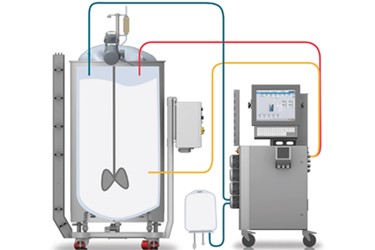A Comprehensive Overview to Implementing Foam Control Solutions in Your Procedures
Efficient foam control is an important facet of functional efficiency that usually goes overlooked. Comprehending the ins and outs of foam generation can considerably impact both performance and product high quality. By analyzing crucial factors such as application compatibility and personnel training, organizations can enhance their foam administration efforts.
Understanding Foam Difficulties
Foam challenges are a significant problem throughout various sectors, affecting operational performance and item high quality. The formation of too much foam can prevent procedures such as mixing, transport, and storage space, resulting in boosted downtime and waste. In sectors like food and drink, drugs, and petrochemicals, foam can disrupt assembly line, creating product inconsistencies and contamination risks.
In addition, foam can obstruct equipment functionality, causing costly fixings and upkeep. For example, in wastewater treatment, foam can interrupt clarifier procedures, causing lower therapy efficiency and governing conformity issues.
Comprehending the underlying sources of foam generation is important for efficient management. Aspects such as surfactants, temperature level variations, and agitation levels can all add to foam production. Recognizing these components permits industries to carry out targeted techniques that minimize foam development while preserving item honesty.
Kinds Of Foam Control Solutions

Mechanical solutions involve the use of gadgets such as foam skimmers or defoamers. Chemical options, on the various other hand, consist of the application of defoaming representatives-- materials that interfere with the foam framework, leading to its collapse. Foam Control.
Last but not least, functional approaches concentrate on procedure changes. This might entail changing tools criteria, such as temperature level and stress, or transforming the circulation prices of fluids to lessen foam generation. In addition, applying excellent housekeeping techniques can likewise alleviate foam formation by decreasing pollutants that add to foam stability.
Selecting the appropriate foam control solution entails examining the certain needs of the operation, consisting of the sort of process, the characteristics of the products included, and security considerations.
Picking the Right Products
Selecting the best foam control items needs a detailed understanding of the certain application and its distinct challenges. Variables such as the sort of foam, the environment in which it happens, and the desired end result all play essential roles in product selection. Foam Control. For circumstances, in markets like food handling, it is crucial to select food-grade defoamers that adhere to security regulations while successfully managing foam.
In addition, consider the thickness of the fluid where the foam problem exists. Some items are formulated for low-viscosity applications, while others are tailored for thicker liquids. Compatibility with existing processes is one more critical aspect; the chosen foam control representatives should incorporate flawlessly without interrupting general procedures.
Another important variable is the method of application. Some products might call for dilution, while others can be applied directly. Examining the convenience of usage and the required dosage can supply understandings into the product's effectiveness and cost-effectiveness.
Application Techniques
Successful application techniques for foam control solutions call for an organized method that lines up item selection with functional needs. The very first step entails an extensive evaluation of the procedures where foam occurs, recognizing details locations that require treatment. By engaging cross-functional groups, consisting of high quality, production, and design guarantee, companies can gather insights that educate the choice of the most reliable foam control items.
Next, it is essential to establish clear purposes for foam reduction, ensuring that these objectives are possible and quantifiable. This may entail defining appropriate foam levels and the timelines for implementation. Educating workers on the buildings and application techniques of selected foam control representatives is equally vital, as official website appropriate use is crucial for optimal outcomes.
Additionally, incorporating foam control options into existing process requires cautious planning. Organizations must develop a phased application plan, enabling adjustments based upon initial results. Regular communication and responses loops with team entailed in the procedure will certainly help with prompt problem-solving and promote a society of constant renovation. Ultimately, a well-structured method will certainly enhance functional performance while efficiently handling foam-related obstacles.
Tracking and Reviewing Effectiveness
Monitoring and assessing the efficiency of foam control remedies is important for making sure that carried out techniques produce the preferred outcomes. This procedure involves methodical information collection and evaluation to examine the efficiency of foam control representatives and methods. Key performance indicators official website (KPIs) ought to be established prior to implementation, enabling a clear baseline against which to measure progress.

Examining efficiency additionally calls for routine testimonials of foam control treatments and representative effectiveness. This can be achieved with sampling and testing, enabling operators to identify if existing solutions are satisfying operational requirements. It is crucial to obtain responses from group members who connect with these systems daily, as their understandings can expose operational subtleties that measurable data may forget.

Eventually, an organized tracking and assessment framework helps identify necessary changes, making sure that foam control options stay efficient, affordable, and straightened with business goals.
Final Thought
In final thought, reliable foam control services are essential for enhancing functional efficiency and keeping product top quality. A comprehensive understanding of foam click site obstacles, incorporated with the choice of appropriate products and execution strategies, assists in the effective management of foam generation.
Carrying out great housekeeping methods can additionally reduce foam development by lowering impurities that add to foam security.
Choosing the ideal foam control items requires an extensive understanding of the details application and its unique difficulties (Foam Control).Effective implementation strategies for foam control remedies require a methodical technique that straightens product option with functional demands.In conclusion, effective foam control services are crucial for maximizing operational efficiency and maintaining product quality. A comprehensive understanding of foam difficulties, integrated with the choice of proper products and implementation methods, helps with the successful management of foam generation